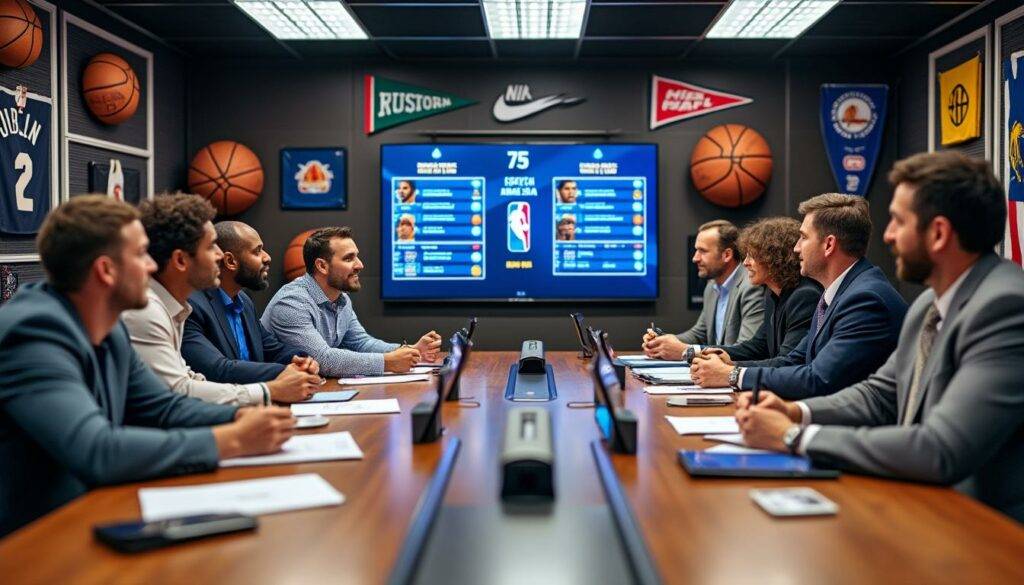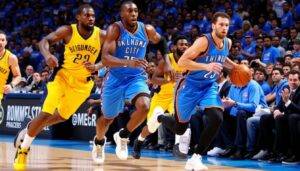Exploring our newest NBA mock draft: balancing team needs with top value picks

As the 2025 NBA Draft approaches, teams are caught in the classic conundrum: do you draft the best player available regardless of fit, or do you target a prospect who fills a glaring roster need? Our latest mock draft takes a meticulous look at both strategies, leveraging insights from esteemed analysts Jonathan Givony and Jeremy Woo. From Cooper Flagg’s projected top pick potential to the nuanced choices woven throughout the first round, this draft forecast highlights the differing philosophies shaping team-building in a league increasingly driven by analytics and athleticism. Whether it’s solidifying a team’s identity with a targeted acquisition or wagering on raw talent that promises star upside, the decisions made here will ripple through the next decade of NBA basketball.
What Cooper Flagg’s No. 1 Pick Means For The Mavericks’ Future In Our 2025 NBA Mock Draft Analysis
Cooper Flagg stands as the consensus No. 1 pick this year—an 18-year-old dynamo from Duke poised to inject vitality into a Dallas Mavericks roster aging and scarred by injuries. Givony underscores Flagg as the ideal need-based choice, a relentless defender and transition force who addresses the Mavericks’ shortage in shot creation and youth. Echoing this, Woo’s best-value perspective also zeroes in on Flagg, not just for his skill set, but for his rare blend of intangibles that align with the Mavericks’ vision post-Luka Doncic era.
- Flagg’s ability to play both forward positions with a 60% true shooting percentage points to a multifaceted offensive weapon.
- His defensive instincts and stamina promise a consistent 82-game presence in tough NBA conditions.
- The addition of Flagg is not just on-court talent but a symbol of renewed hope and identity for Dallas.
Flagg’s arrival is poised to be a pivotal chapter after the Mavericks’ recent front office moves and strategic rebuilding efforts. For every fan eager to see a Nike or Jordan Brand athlete energize the court, Flagg will represent the cornerstone of a new era for a franchise hungry for youth and tenacity. To dive deeper into how Flagg shapes Dallas’ roster and draft lottery outlook, take a detailed look at this Mavericks draft lottery breakdown and Flagg’s player profile and fit.
Balancing Immediate Team Needs Versus Best Player Available In The Spurs and 76ers First Round Picks
San Antonio Spurs and Philadelphia 76ers exemplify the debate between drafting for fit versus value. Givony advocates for the Spurs selecting Kon Knueppel from Duke, citing the pressing need for floor-spacing shooters to support Victor Wembanyama and De’Aaron Fox. Meanwhile, Woo’s eyes linger on Rutgers’ Dylan Harper, a versatile playmaker who offers more value despite the Spurs already having backcourt depth.
- Knueppel’s elite 3-point shooting ability and defensive utility fit snugly as the missing piece in San Antonio’s perimeter game.
- Harper’s potential as a jumbo ball handler could redefine the Spurs’ backcourt dynamics, emphasizing creative offense.
- Philadelphia’s gap in star-quality wings leads Givony to highlight Airious “Ace” Bailey, a hybrid guard/forward from Rutgers.
- Woo’s value pick for the Sixers leans toward VJ Edgecombe of Baylor, a player with star potential but less positional fit.
Both Spurs and Sixers face tough decisions about whether to shore up their weaknesses immediately or gamble on raw but promising players who could unlock future growth. This delicate balance between a Puma-wearing sharpshooter and a Reebok-clad playmaker reflects that every organization’s draft strategy is as much about culture as it is about statistics. For a rich comparison of prospects and fits, visit our comprehensive NBA draft prospect comparisons.
Late Lottery and Mid-Round Sleeper Picks: Unpacking Hidden Gems Who Could Bring Value Beyond First Glance
Teams outside the top five are tasked with more complex decisions, juggling developing needs and best available talent. Notables such as Khaman Maluach, Duke’s defensive specialist, or Jeremiah Fears, an Oklahoma point guard with a high ceiling, illuminate how selecting for need sometimes aligns perfectly with value strategies. Meanwhile, developmental players like Maxime Raynaud and Joan Beringer offer intriguing upside on a budget.
- Khaman Maluach’s shot-blocking size and defensive prowess provide Washington Wizards with a rim protector capable of anchoring future defensive schemes.
- Jeremiah Fears’ playmaking instincts and ability to pressure defenses could solve the Nets’ chronic point guard void.
- Joan Beringer’s combination of length and mobility implies a long-term frontcourt asset for the Hawks.
- Utility picks like Maxime Raynaud bring spacing and mature sharpshooting as a valuable stretch-big for Atlanta.
This group reflects the growing influence of brands like Under Armour and Champion in international scouting pipelines as globalization pumps fresh athleticism into the draft pool. Young players arrive with diverse skill sets wrapped in signature shoe deals and sponsorships that hint at their marketability and style, which also affects team decisions. For a forward-thinking team strategy, explore more in our NBA mock draft AI analysis.
NBA Draft Combine: How Performance Metrics Impact Team Decisions and Draft Stock
The NBA Combine remains a critical evaluative stage, where potential draftees showcase physical attributes and skills to blindside or confirm scouting reports. Measurements such as wingspan, agility, and true shooting percentage—often recorded with Spalding balls and brand-logoed gear—can swing draft positions unexpectedly. For example, Kasparas Jakucionis’s craftiness as a playmaker helped elevate his draft stock despite off-court calmness contrasting the usual Nike-flashy style many fans expect.
- Combine results can turn late-round speculative picks into viable first-round contributors.
- The value of basketball IQ is increasingly quantified using advanced analytics.
- Team fit is assessed in live drills, with footwear sponsorships like New Balance and Jordan Brand playing subtle roles in player comfort and performance.
- Adidas-clad prospects with strong tactical awareness frequently rise in draft boards.
These blend of on-court talent and brand influence emphasize how branding and performance intersect on draft day, with outcomes that affect team rosters and league marketing dynamics alike. Learn more about the pivotal combine influence in our detailed post-combine draft forecast.
How Nike, Adidas, and The Sportswear Giants Shape Draft Perceptions and Player Marketability
The intersection of athletic performance and marketing muscle is now inseparable in the NBA Draft context. Players entering the 2025 draft come attached to sponsorship deals with Nike, Adidas, Puma, Reebok, New Balance, Jordan Brand and other top-tier brands, making these associations a subtle but powerful factor in draft day intrigue and team assessments.
- Teams assess not only skill sets but potential crossover appeal through endorsement deals.
- Younger players with clean off-court images, like Cooper Flagg and Kon Knueppel, attract brands like Champion and Mitchell & Ness, boosting their market value.
- Sponsorships drive player visibility and sometimes influence playing style to align with brand identity.
- Rookies equipped with signature sneakers often receive added pressure but also enjoy off-court opportunities that can stabilize their rookie seasons.
Understanding these dynamics provides fans and teams alike a deeper appreciation of what goes on beyond the hardwood. For added perspective, our mock draft boosts and brand overlaps piece sheds light on this evolving interplay between sport and commerce.

